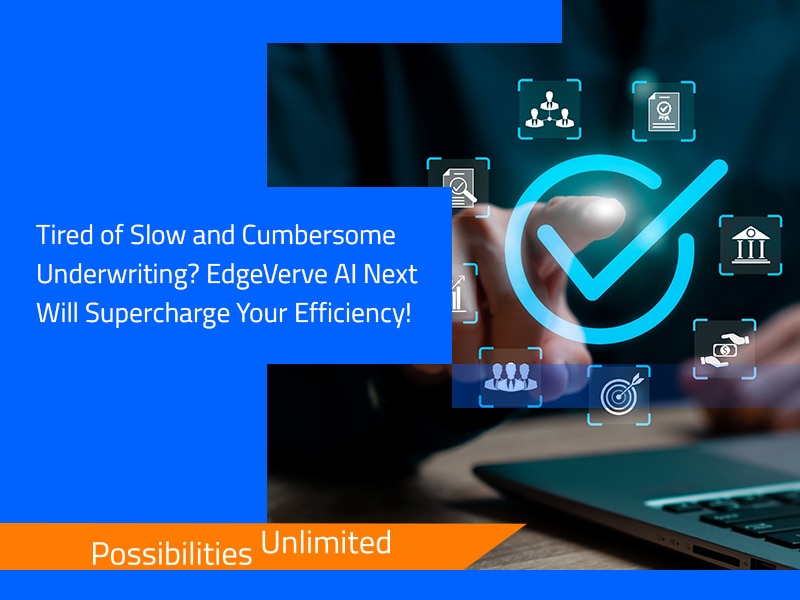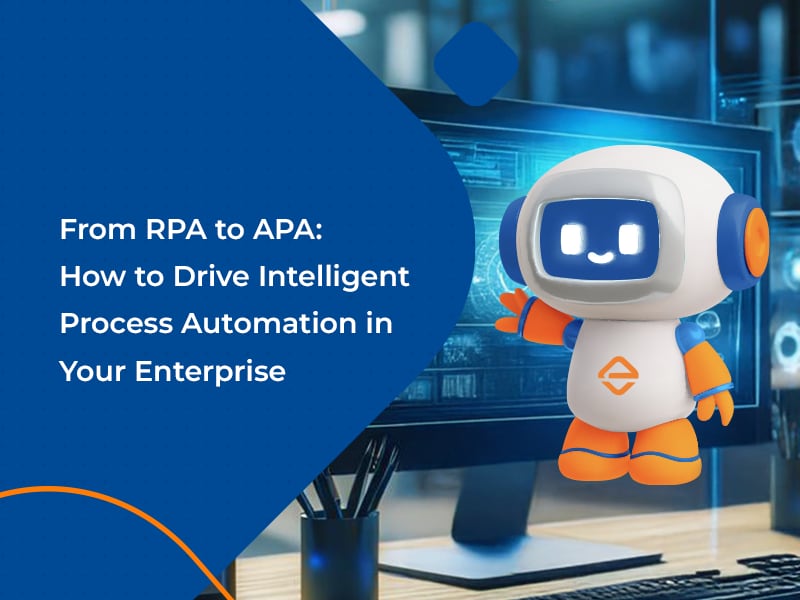Organizations are now transitioning to the fifth industrial revolution, which is redefining the way of working, with a focus on the convergence of human, workflow automation, state machine-based automations, and Agentic Artificial Intelligence (Agentic AI). Robotic Process Automation (RPA) focuses on workflow and state machine-based automations for rule-based tasks, along with event-based tasks and those that are repetitive or mundane. In contrast, Agentic AI enables machines to make decisions, adapt, and learn autonomously. RPA focuses on attended or unattended automations that provide output by automatically performing a predetermined sequence of actions depending on a sequence of events or designed business rules.
RPA is primarily suited to structured, rule-based processes; the success rate decreases with increasing workflow complexity and dynamicity. Recently, most vendors have added features like self-healing of robots, applications, systems, and process-level complex exception handling scenarios to increase the automation success rate. Despite these enhancements, pre-defined rule-based decisions in RPA workflows aren’t accurate for dynamic scenarios. Hence, there is a need to integrate Agentic AI into RPA workflows to increase the success rate and stability of automation solutions. Agentic AI integrations with RPA bots can operate beyond pre-defined rules; they can leverage Large Language Models (LLMs) to address complex and unpredictable scenarios.
The powerful combination of RPA and Agentic AI can automate a broader range of complex processes. Due to its deterministic nature, RPA provides accuracy that can be further amplified by Agentic AI’s intelligence and self-healing capabilities. Moreover, a powerful combination of RPA and Agentic AI can handle dynamic and complex scenarios with ease.
Drivers of RPA to RPA + Agentic AI Transitions
-
Dynamicity and Complexity in Business Processes
Business process scenarios involve data in both structured and unstructured formats, and their complexity increases with an increase in business rules in processes; most of these rules are dynamic and decision-based. This complexity can be easily addressed by integrating RPA with Agentic AI systems to automate end-to-end processes, enabling ‘self-healing’ and ‘self-adjustments’ in case of dynamicity in the business process. Self-heal agents are designed to address dynamicity by handling unexpected failures. In complex, ever-changing systems, processes may fail due to changes in process flow, whereas self-adjustment capability enables AI Agents to learn from their own experiences and modify their behavior to improve performance and achieve the goal more effectively.
-
Industry Shift from Automation to Autonomous Systems
Traditional automation systems are now transitioning to making them semi-autonomous, requiring the convergence of humans and Agentic AI . The goal of the industry is to have autonomous systems handle business processes monitored by humans.
-
Personalized Customer Experiences
There is a customer need for real-time analytics, personalization, and dynamicity in the business processes. Automation streamlines personalized experiences, reduces manual effort and operational costs, driving value creation.
Few Use Cases of RPA and Agentic Artificial Intelligence
-
Logistics Operations
RPA is powering GBS logistics operations, like in processes of intermodal freight operations, vehicle operating and service agreements, invoicing, shipment scheduling and tracking, document and data management, order fulfillment, etc. Traditionally, RPA works based on a pre-defined set of mundane process steps and rules; here, Agentic AI can easily integrate to predict demand, enable document management, make decisions on advanced scheduling of shipments based on available data, and even manage order fulfillment with a supervisor and workers Agentic AI.
-
Customer Services
RPA attended automation has alleviated mundane tasks within customer services in GBS by utilizing personal AI assistants. These RPA personal assistants, now enhanced with AI chatbots, improve customer service through personalized chat interfaces and personalization with retrieval augmented generations provides relevant information from knowledge bases prior to generating texts, tool calling, i.e., external application calls. The combination of RPA and Agentic AI in customer service helps agents resolve customer inquiries faster, thereby reducing average handling times.
-
Accounts & Banking
Traditionally, RPA has automated mundane processes such as batch bank reconciliation, customer onboarding, KYC & AML. Now complex processes can be automated by integrating RPA with Agentic AI, like personalized recommendations—tailored financial advice based on individual behaviors, predictive modeling to anticipate future financial needs, anomaly detections, automated regulatory compliance, analysis of financial behavior & spending patterns.
Key Challenges
The transition from RPA to RPA + Agentic AI offers the advantage of Intelligent Automation, but it also introduces inherent problems to solve. Here are some key challenges that companies may face:
-
Complexity in Disparate Applications
Business applications and their associated data often exist in silos; disparate systems are designed to operate in a way that is fundamentally different than the systems with which Agentic AI works. There should be integrated and connected systems to leverage and upgrade Agentic AI capabilities effectively.
-
Data Privacy and Security Compliance
Agentic AI involves processing vast amounts of sensitive data that requires adherence to data regulations. To ensure robust safeguard mechanisms, it’s necessary to monitor and protect the AI models and systems from risks and threats. There is a need for a responsible AI framework that includes a combination of accelerators and solutions designed to drive responsible AI adoption across enterprises and ensure strong AI governance, ethics, and security.
-
Infrastructure Requirements
Agentic AI implementations require high-performance computing resources and scalable cloud services, which most organizations in the banking & finance, public sector enterprises, or operations domains lack. Lack of infrastructure readiness is a key challenge for transformations with RPA + Agentic AI.
-
Talent Shortage
The transition from RPA to Agentic AI is creating a talent shortage, as it demands a new skillset that goes beyond automation. While RPA requires rule-based workflow development, Agentic AI necessitates expertise in problem-solving and prompting. EdgeVerve AI Next, with native RPA and Agentic AI capabilities, helps bridge this gap by offering a unified low-code, no-code platform. This empowers existing teams to upskill and transition from building simple bots to designing intelligent, self-adjusting Agents.
An Approach to Accelerate Agentic Process Automation
True enterprise-grade Agentic AI is rarely implemented. There are different levels of AI maturity, ranging from RPA to Copilots or AI Agents, Multi-Agentic Systems, and Autonomous workforces. Most organizations are currently using Copilots or RPA, often adding minimal intelligence by integrating with Agentic systems. However, a shift is needed from RPA to RPA + Agentic AI, Multi-Agent Systems, and Autonomous systems; these combinations are seldom implemented.
As next steps, we can address these key challenges in transitioning from RPA to RPA + Agentic AI by upgrading new systems, investing in technology and talent, ensuring robust data & security compliance, and enhancing infrastructure. The transition from RPA to RPA + Agentic AI systems, i.e., Intelligent Automation, marks a crucial landscape of digital transformations for organizations. While RPA successfully delivered ROI by automating mundane, rule-based tasks, with increasing complexity and dynamicity, it requires the Agentic AI fabrication within RPA workflows to build more adaptive and self-healing automation workflows.
Transition to RPA + Agentic AI can help organizations tackle the broad spectrum of unstructured and complex processes, where RPA is the foundation for rule-based tasks and Agentic AI enhances the ability of automation workflow to manage complex and unstructured process flows, make context-aware decisions, adapt, and learn continuously. Finally, the goal is not to replace RPA with Agentic & AI, but to transition to RPA + Agentic AI that creates a symbolic relationship where these technologies complement each other.
The Platform Advantage: Powering Agentic Process Automation
Realizing these benefits requires a unified platform approach, such as EdgeVerve AI Next, to streamline AI adoption and ensure long-term success. This approach minimizes project overruns, accelerates deployments, and delivers consistent outcomes through:
- Unified Data Layer: Seamlessly integrate new AI agents with a curated knowledge base, eliminating messy retrofitting.
- Modular Models: Select and update specialized models for each use case without disrupting the entire system.
- Orchestrated Agents: Deploy new agents as independent yet interconnected mini services, maintaining system stability.
- Built-in Governance: Proactively manage biases, audits, and compliance with platform-level guardrails.
- Intent-Driven, Contextually Aware Execution: Enable agents to understand the desired outcome and adapt to process nuances, allowing them to autonomously determine the optimal path for enhanced decision-making and automation efficacy.
Further, the value of the platform for specific organizational setups/delivery models such as Global Business Services (GBS) could be enhanced through curated platform-based offerings. For instance, EdgeVerve AI Next Operations & Service Management (OSM) is an Agentic-powered platform built on AI Next to drive AI-led transformation of GBS at speed and scale. It’s packed with powerful capabilities—from AI-driven service request handling and intelligent case management—to dynamic workforce allocation and insightful dashboards.
From the above benefits, it’s clear that a unified platform approach can help accelerate the transition from RPA to RPA + Agentic AI and ensure optimal ROI on automation investments.




Sumit Sagar
Senior Analyst, Product Management,
More blogs from Sumit Sagar >EdgeVerve